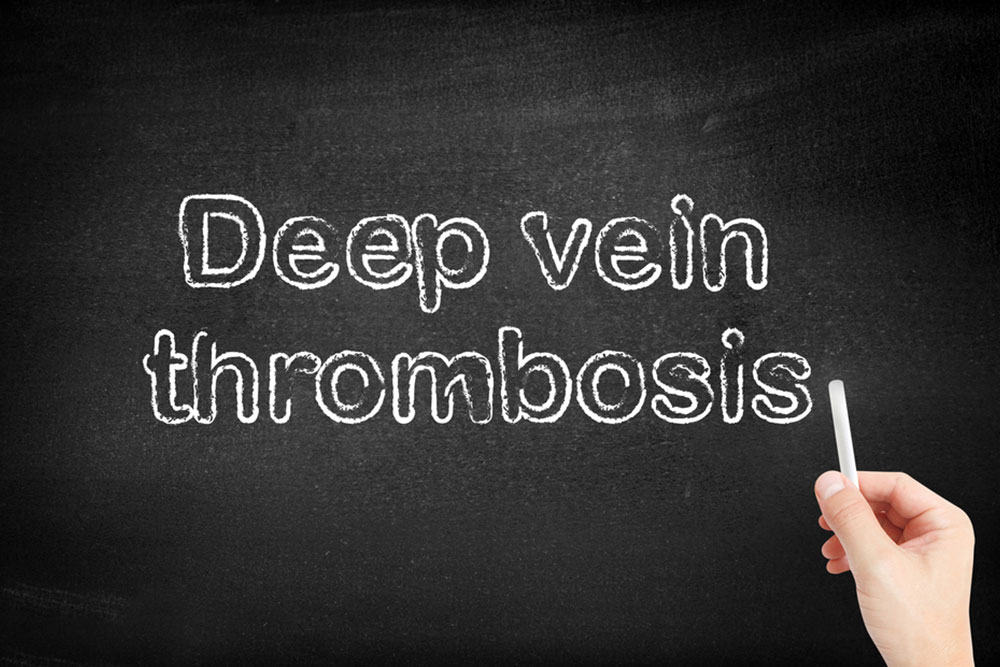Everything to Know about Deep Vein Thrombosis
Most of us are unaware of the disease named deep vein thrombosis as it hardly has any symptoms. To begin with, this disease leads to the formation of blood clots in our veins. This blood clot can be found in any part of the human body but is especially found in the thigh area. This disease is closely related to some other types of health problems which include post-phlebitis syndrome, thromboembolism, and post-thrombotic syndrome.
There can be several causes of this disease. However, the symptoms of deep vein thrombosis can differ with the intensity and cause of the disease. Here are certain causes of deep vein thrombosis.

- Paralysis: Blood clots begin to form when our legs remain in a constant position for a longer period of time. If a person is a paralytic then he/she can easily fall prey to this disease.
- Pregnancy : During pregnancy, the pressure felt upon the veins of the legs or pelvis increases and this might result in a blood clot. In fact, a blood clot might remain for at least six weeks after delivery.
- Obesity: If you are overweight then the chances of a blood clot in your legs or pelvis might increase.
- Family history: Those who have a family history of deep vein thrombosis then there are chances that they might suffer from this disease.
Each and every disease has some symptoms. Symptoms can give a clear idea about the occurrence of a disease. However, symptoms of deep vein thrombosis are very rare and only a few people can understand it. Nonetheless, there are some common symptoms that one may encounter if he/she suffers from this disease.
- Excessive pain in the affected areas of your leg and usual pain from the calf.
- The affected area becomes either bluish or reddish.
- The affected area seems to be quite warm in comparison to the surrounding areas of the body.
- Inflammation of the foot, leg or ankle.
- Intolerable pain in the ankle and foot.
In the absence of these rare symptoms, you will not understand if you have been struck by deep vein thrombosis. If you suffer from pulmonary embolism then only you will be able to know that you are suffering from deep vein thrombosis.
The diagnosis can be undertaken after your doctor asks you about the symptoms of deep vein thrombosis. The physician will examine your certain physical aspects like swelling, discoloring of skin or tenderness of the affected areas. Based on the intensity and cause of blood clot, the doctor suggests certain tests. The diagnosis processes have been discussed below:
- Blood test : People who have this disease usually have increased levels of a substance named D-dimer.
- CT scan : The CT scan images can clearly indicate the presence of a blood clot in the veins.
- Ultrasound : A transducer is placed over the particular areas where you are facing problems. The sound waves can help in detecting the presence of a blood clot.
- Venography : In this process, a dye is inserted into the ankle and the X-ray images are able to show that whether the veins have a clot or not.
This disease can result in some complications if not detected at the right time. One of the complications that a patient can get is a pulmonary embolism. Once the blood clot begins to move toward your lungs the blood vessels that are connected with the lungs and other organs tends to get damaged.
If you experience the below-mentioned signs then you should immediately visit a doctor.
- Fast heartbeat
- Dizziness
- Problem in breathing
- A cough
- Chest pain
- Blood began to come out with coughing
The main objective of treating deep vein thrombosis is to obstruct the formation of bigger clotting. Have a look at some of the treatment options.
Clot busters
Clot busters can prove effective for those who are at the last stage of this disease and who have a pulmonary embolism. It helps in breaking up of the blood clots in a faster manner. It is often given to those patients who do not respond to medications.
This drug is either given to the patients by placing a catheter in the clot or by breaking the clot through an IV line. As this medication can result in excessive bleeding so it is better to give to those with severe blood clots.
Compression stockings
A compression stocking is often recommended by physicians for lowering down the chances of clot formation. It is also known to prevent inflammation. Although its use cannot remove blood clots it can definitely give you some relief.
Blood thinners
The use of this drug will help in reducing the ability of blood to form clots. It can be injected or taken in the form of pills. Although they are not able to break clots they can help in slowing the processes of intensifying of blood clots.
Therefore it can be concluded that one should gain adequate knowledge about this disease before it strikes your near and dear ones. A person can prevent this formation of blood clots by maintaining mobility of the legs, lower down calories if they are obese and take a blood thinner if they are at an initial stage of this disease.
